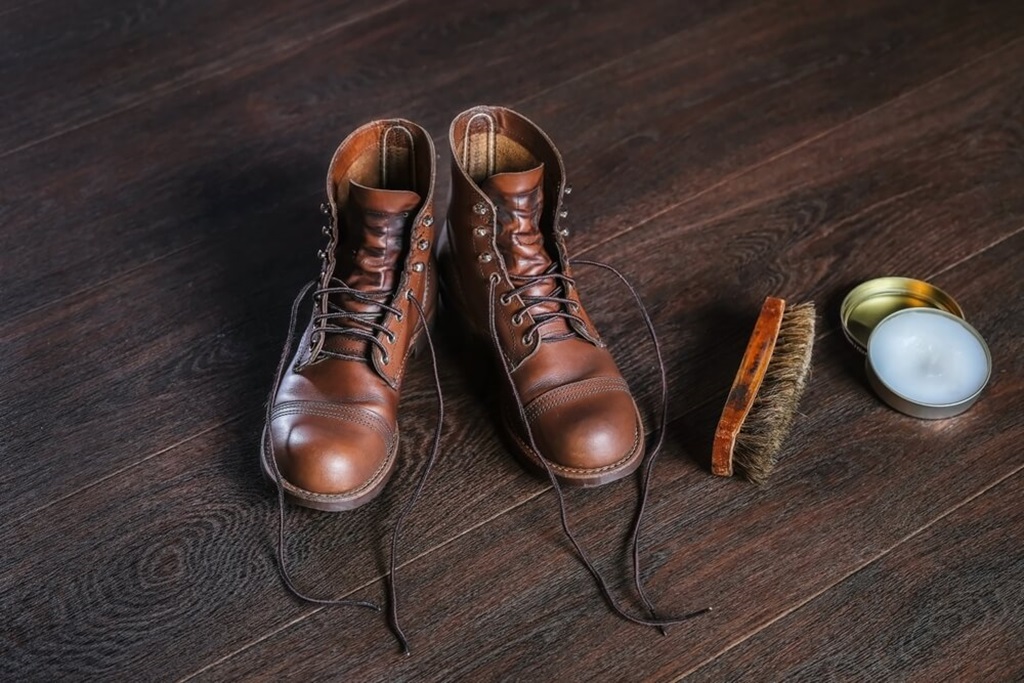Boots are more than just footwear; they are an investment in style, durability, and comfort. Whether you’re a fan of rugged leather boots or cozy winter ones, taking care of them is essential to ensure they last. One of the best ways to maintain your boots is by applying mink oil. If you’re wondering how to apply mink oil to boots effectively, this guide will walk you through the process in a simple, easy-to-follow manner.
By the time you’re done reading, you’ll not only know the proper steps but also understand why mink oil is a great choice for leather boots, how it compares to other treatments, and why it matters for your boots’ longevity.
What is Mink Oil, and Why Should You Use It?
Mink oil, made from the fat of minks, is a natural product often used to condition, waterproof, and protect leather goods. What makes mink oil special is its ability to penetrate deep into the leather fibers, providing nourishment and flexibility. Over time, leather tends to dry out and crack due to exposure to elements like sun, water, and air. Mink oil helps to prevent these issues by keeping the leather soft and supple.
Here’s why many boot enthusiasts swear by it:
- Nourishes leather: Mink oil replenishes the natural oils that leather loses over time, keeping it hydrated and preventing cracks.
- Waterproofing: One of its major benefits is creating a water-resistant barrier that protects your boots from rain and snow.
- Preserves flexibility: Leather that’s well taken care of stays flexible and molds to your foot better, making your boots more comfortable over time.
According to a study by The Leather Conservation Centre, treated leather is more durable by up to 40%, which shows the importance of regular conditioning.
Steps to Properly Apply Mink Oil to Boots
Now that you understand the importance of mink oil, let’s get into how to actually apply it to your boots. Don’t worry— it’s an easy process, and anyone can do it at home!
-
Clean Your Boots First
Before you even think about applying mink oil, you need to make sure your boots are clean. Dirt, dust, and grime can prevent the oil from absorbing properly, so it’s essential to start with a fresh surface.
- Use a damp cloth: Gently wipe off any surface dirt. If there’s caked-on mud, you can use a soft brush.
- Leather cleaner (optional): If your boots are particularly dirty, you may want to use a leather-specific cleaner. Make sure it’s fully dry before moving on to the next step.
-
Warm the Mink Oil
Why warm it? Warm mink oil spreads more evenly and absorbs deeper into the leather. You don’t need any fancy equipment for this.
- How to warm it: Place the container of mink oil in a warm (not hot) area, or gently heat it with your hands.
- Don’t overheat: Avoid direct heat sources like microwaves or stoves. Overheating can change the oil’s properties.
-
Apply the Mink Oil
- Use a clean cloth: Take a small amount of mink oil and apply it to the cloth. Start with a small section to see how the leather reacts.
- Rub in circular motions: Begin applying the oil to your boots in circular motions. Make sure to cover the entire surface, paying extra attention to creases or areas that see the most wear.
It’s important not to over-saturate the leather. Too much oil can clog the pores of the leather, making it heavy and sticky. A light coat is usually enough.
-
Let the Boots Absorb the Oil
After applying, let your boots sit and absorb the oil for a few hours, preferably overnight. The longer the oil has to sink in, the better the results will be. This step is crucial because it ensures the leather absorbs the oil deep into its fibers.
- Dry naturally: Avoid using heaters or direct sunlight to speed up the drying process, as this can cause the leather to dry unevenly or crack.
- Test absorption: If your boots feel tacky the next day, they may have too much oil. Wipe off any excess with a dry cloth.
-
Buff the Boots
Once the oil is fully absorbed, you’ll want to buff the boots to bring out a nice shine and smooth finish.
- Use a horsehair brush or clean cloth: Gently buff the boots in a circular motion until they look polished.
This final step will give your boots a nice shine while helping to further seal in the oil and improve their water resistance.
Benefits of Using Mink Oil on Leather Boots
You might be asking yourself, “Is mink oil really worth the effort?” The short answer: absolutely! But let’s break it down into logical reasons why:
- Weather Protection: Leather boots are notorious for becoming stiff and cracking after exposure to harsh weather. Mink oil creates a protective barrier against rain, snow, and even salt, ensuring your boots last longer.
- Softer Leather: As mentioned earlier, mink oil keeps your boots soft and flexible, which is not only good for their appearance but also for comfort. According to leather expert Jane Richards, boots treated with mink oil are less likely to develop hard-to-fix creases.
- Longevity: A study conducted by a leading leather treatment company showed that boots treated regularly with mink oil outlast untreated ones by 25%, proving it’s a worthwhile investment.
Related: Mom and Son Matching Shoes: A Fun and Fashionable Trend
Are There Alternatives to Mink Oil?
While mink oil is a fantastic option for treating leather, it’s not the only one. There are several alternatives out there, each with its pros and cons. Let’s compare mink oil to some other popular choices.
- Leather Conditioners: Most leather conditioners are made from natural oils and waxes. They’re a great option for regular conditioning, though they may not provide the same level of waterproofing as mink oil.
- Beeswax: Beeswax is excellent for waterproofing but can make the leather feel stiff. It’s often used in outdoor boots for heavy-duty weather protection but might not be as suitable for everyday boots.
- Coconut Oil: Some people swear by coconut oil as a leather conditioner, but it can darken the leather and doesn’t provide as much waterproof protection as mink oil does.
If you’re looking for a comparison between popular boot brands, you can explore Bradayusa blog for more in-depth reviews and care tips for different types of leather footwear.
Common Concerns About Using Mink Oil
When it comes to treating leather, especially with mink oil, there are some common concerns and questions. Let’s tackle a few of them:
Will Mink Oil Darken My Boots?
Yes, mink oil can darken leather, especially lighter shades. This happens because the oil penetrates deep into the leather fibers, enriching its natural color. For some people, this is a plus, as it gives the boots a richer, more polished look. However, if you want to maintain the original color of your boots, you may want to test the oil on a small, inconspicuous area first.
How Often Should I Apply Mink Oil?
This largely depends on how often you wear your boots and the conditions they face. A good rule of thumb is to reapply mink oil every 3-6 months, or whenever the leather starts to feel dry or stiff.
Mink Oil vs Other Boot Treatments: Which is Better?
While mink oil has been the go-to for many leather enthusiasts, it’s not the only option out there. Let’s compare mink oil with other popular boot care products, like beeswax and coconut oil, to give you a clearer picture.
- Waterproofing: Mink oil excels in waterproofing because it penetrates deeply, while beeswax creates a top layer. Beeswax is better for extremely wet conditions, but it may leave the boots stiff.
- Moisturizing: Mink oil is unbeatable in keeping leather soft and flexible. Coconut oil moisturizes as well, but it can darken the leather more than mink oil and doesn’t offer much protection against water.
- Cost: Mink oil tends to be more affordable than some specialty leather conditioners, making it an accessible option for most boot owners.
When comparing brands, for example, koolaburra by ugg vs ugg, mink oil remains a popular choice for treating and maintaining high-end leather boots due to its versatility and protective qualities.
Related: Top 35 Trending Women Shoes of the Season
Final Thoughts: Why Mink Oil is Worth the Effort
Caring for your boots with mink oil is more than just a routine task—it’s an investment in extending their life and keeping them looking great. By following the steps outlined above, you can ensure your boots are not only protected from the elements but also remain soft, flexible, and comfortable for years to come.
From waterproofing to preserving leather’s softness, mink oil provides a well-rounded solution that few other products can match. While alternatives like beeswax and coconut oil have their benefits, mink oil remains a top choice for those who want long-term protection and care for their leather boots.
So, if you’re ready to give your boots the care they deserve, grab some mink oil, follow these steps, and enjoy your well-conditioned, weather-resistant boots for years to come!





